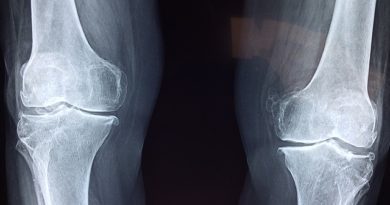3 Things You Should Be Doing to Maximize Muscle Gains
If you’re serious about bodybuilding, you know that building a truly impressive physique requires more than just showing up to the gym. To maximize muscle gains, you need a smart, strategic approach that aligns your training, nutrition, and recovery. For more than two decades as a certified strength coach and sports nutritionist, I’ve seen countless athletes transform their bodies by mastering a few core principles.
This isn’t just about lifting heavy. It’s about creating an anabolic environment where your body is primed to build quality, lean mass. Adding muscle does more than enhance your physique; it also acts as your body’s metabolic engine, burning more calories even when you’re at rest.
This guide will break down the three fundamental pillars you must focus on to build the powerful, well-defined frame you’re working toward.
Disclaimer: This article is for informational purposes only and is not meant to treat or diagnose any condition. It is recommended that you speak with your doctor before starting any exercise program, changing your daily nutrition, or adding any supplements to your regimen.
Table of contents
Key Takeaways
- Fuel for Growth: Consume 1.4 to 2.0 grams of protein per kilogram of body weight daily to provide the essential building blocks for muscle repair and hypertrophy so that you can maximize muscle gains.
- Recover to Rebuild: Aim for 7-9 hours of quality sleep per night to maximize the release of natural growth hormone, which is critical for muscle repair and development.
- Challenge to Change: Consistently apply progressive overload by increasing weight, reps, or training intensity to force your muscles to adapt and grow stronger.

Give These 3 Things a Try to Maximize Muscle Gains
Many aspiring bodybuilders get lost in complex routines and exotic supplements. The truth is, mastering the fundamentals is what separates good from great. Below are the three non-negotiable pillars for building serious muscle.
1. Eat more protein to maximize muscle gains
You can’t build a house without bricks, and you can’t build muscle without protein. Protein provides the amino acids necessary to repair the micro-tears in your muscle fibers caused by intense training, allowing them to rebuild bigger and stronger.
For serious athletes looking to maximize muscle gains, the old numbers just don’t cut it. The International Society of Sports Nutrition (ISSN) recommends a protein intake of 1.4 to 2.0 grams per kilogram of bodyweight per day for exercising individuals. For a 200-pound (91kg) bodybuilder, that translates to a target of 127-182 grams of high-quality protein daily.
While hitting this target with whole foods like chicken, beef, eggs, and fish is ideal, many find it practical to supplement. A high-quality protein shake can be a game-changer, especially post-workout.
- Whey Protein: This is a fast-digesting protein, making it perfect for your post-workout shake to quickly deliver amino acids to your muscles when they’re most receptive.
- Casein Protein: Known as a “slow” protein, casein digests over several hours. This makes it an excellent choice before bed, providing a steady stream of amino acids to prevent muscle breakdown overnight.
2. Get enough rest
Many lifters think the magic happens in the gym, but as I always tell my clients, training is just the stimulus. The real growth happens when you recover. Combining smart nutrition with adequate rest is what truly unlocks your potential to maximize muscle gains.
Your primary recovery tool is sleep. Each night, you should aim for a solid seven to nine hours of good quality sleep each night. It’s during the deep sleep stages that your body releases the highest amount of natural growth hormone (GH), a powerful anabolic hormone essential for repairing and building muscle tissue. A recent study from UC Berkeley highlighted that this nightly GH surge is critical for maintaining muscle mass and balancing metabolism.
Rest also means giving your muscles time off between workouts. A common rule is to allow at least 48 hours before training the same muscle group again. If you train chest on Monday, you shouldn’t hit it again until Wednesday at the earliest. For advanced bodybuilders, incorporating a “deload week” every 6-8 weeks can be a powerful strategy. This planned reduction in training volume and intensity allows your central nervous system and muscle fibers to fully recover, preventing overtraining and helping you smash through plateaus.
3. Progressive overload
Your muscles will not grow unless you give them a reason to. The principle of progressive overload dictates that you must continually increase the demands placed on your musculoskeletal system to stimulate further adaptations in muscle size, strength, and endurance. Simply going through the motions with the same resistance training routine week after week leads to stagnation.
To keep making progress, you need to challenge your muscles consistently. While most people think this just means adding more weight, there are several effective methods:
- Increase Resistance: The most straightforward method. Once you can comfortably hit your target rep range, add more weight to the bar.
- Increase Reps/Sets: If you can’t increase the weight, aim to complete more reps with the same weight. The 6-12 rep range is widely considered the sweet spot for hypertrophy (muscle growth).
- Decrease Rest Time: Shortening your rest periods between sets increases metabolic stress, another key driver of hypertrophy.
- Improve Tempo: Slowing down the eccentric (lowering) phase of a lift increases time under tension, forcing your muscles to work harder and stimulating growth.
A crucial tip I share with athletes is to log every workout. Using an app like Jefit or even a simple notebook allows you to track your numbers objectively. This data ensures you’re always pushing for more than you did last time, which is the essence of progressive overload and allows you to maximize muscle gains.
FAQs
How important is training to failure?
Training close to failure is more important than reaching absolute failure on every set. Research shows that stopping 1-3 reps short of failure can produce similar muscle growth with less systemic fatigue and a lower risk of injury. For experienced lifters, strategically using failure training on isolation exercises can be a tool to break through plateaus, but it’s not necessary for every set.
Should I take creatine to maximize muscle gains?
Yes, creatine monohydrate is one of the most researched and effective supplements for increasing strength, power output, and muscle mass. It works by increasing your muscles’ stores of phosphocreatine, which helps regenerate ATP, the primary energy source for short, explosive movements like weightlifting. A typical dose is 3-5 grams per day.
Does meal timing around workouts matter?
While the “anabolic window” isn’t as short as once believed, consuming protein and carbohydrates within a couple of hours after your workout can support recovery and muscle protein synthesis. However, research shows that your total daily protein and calorie intake is the most critical factor for muscle growth. The key is consistency in hitting your daily targets.


*Disclosure: This article may contain affiliate links or ads, which means we earn a small commission at no extra cost to you if you make a purchase through these links. These commissions help support the operation and maintenance of our website, allowing us to continue producing free valuable content. Your support is genuinely appreciated, whether you choose to use our links or not. Thank you for being a part of our community and enjoying our content.
PLEASE CONSIDER SHARING THIS ON YOUR SOCIAL MEDIA TO HELP OTHERS LEARN MORE ABOUT THIS TOPIC.





